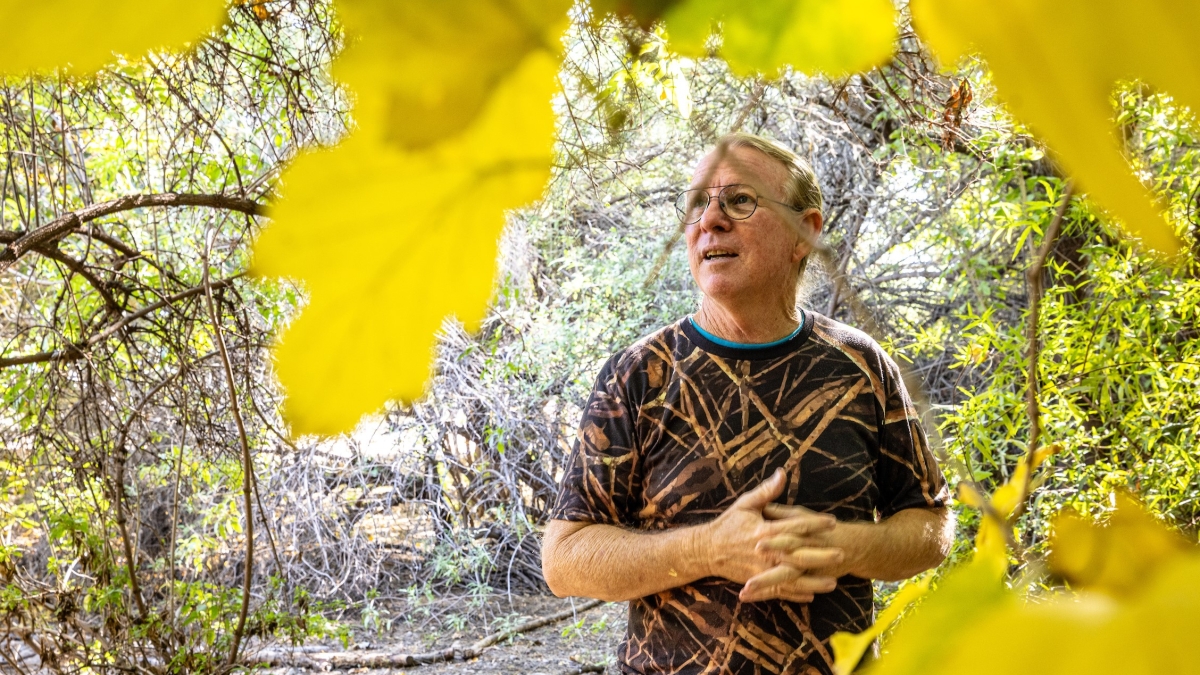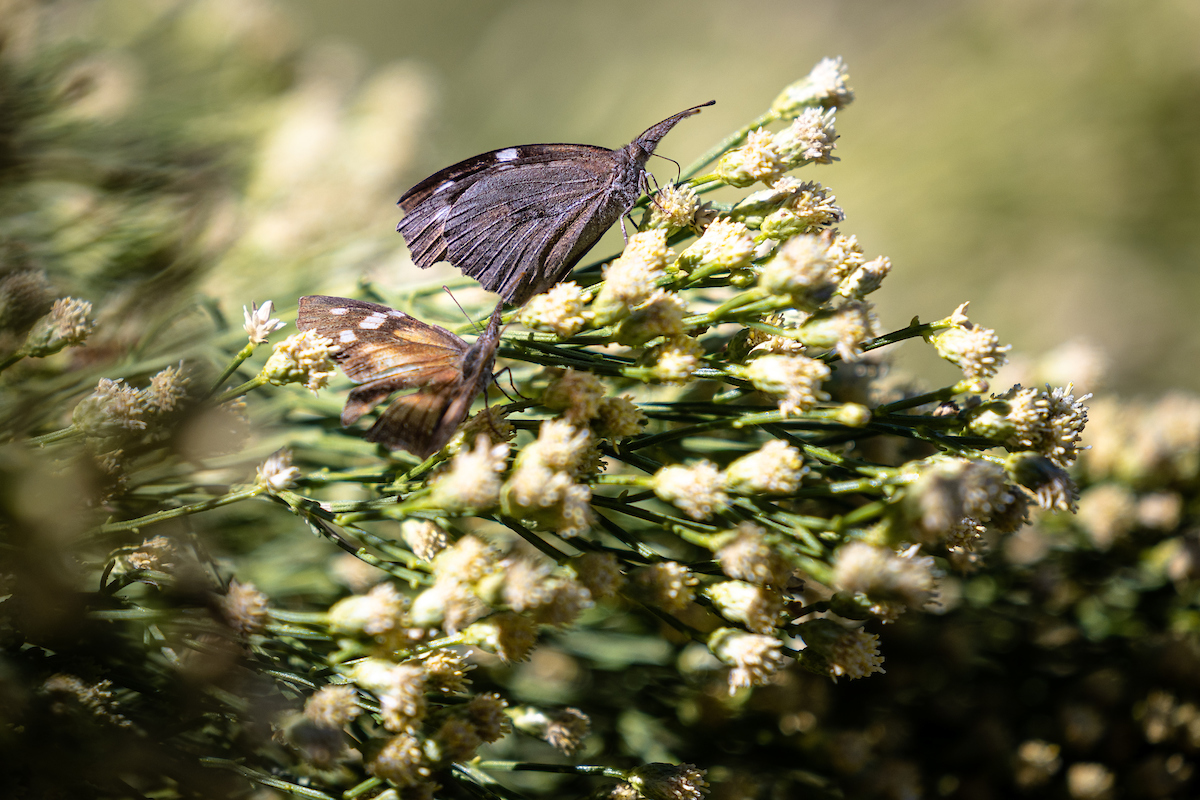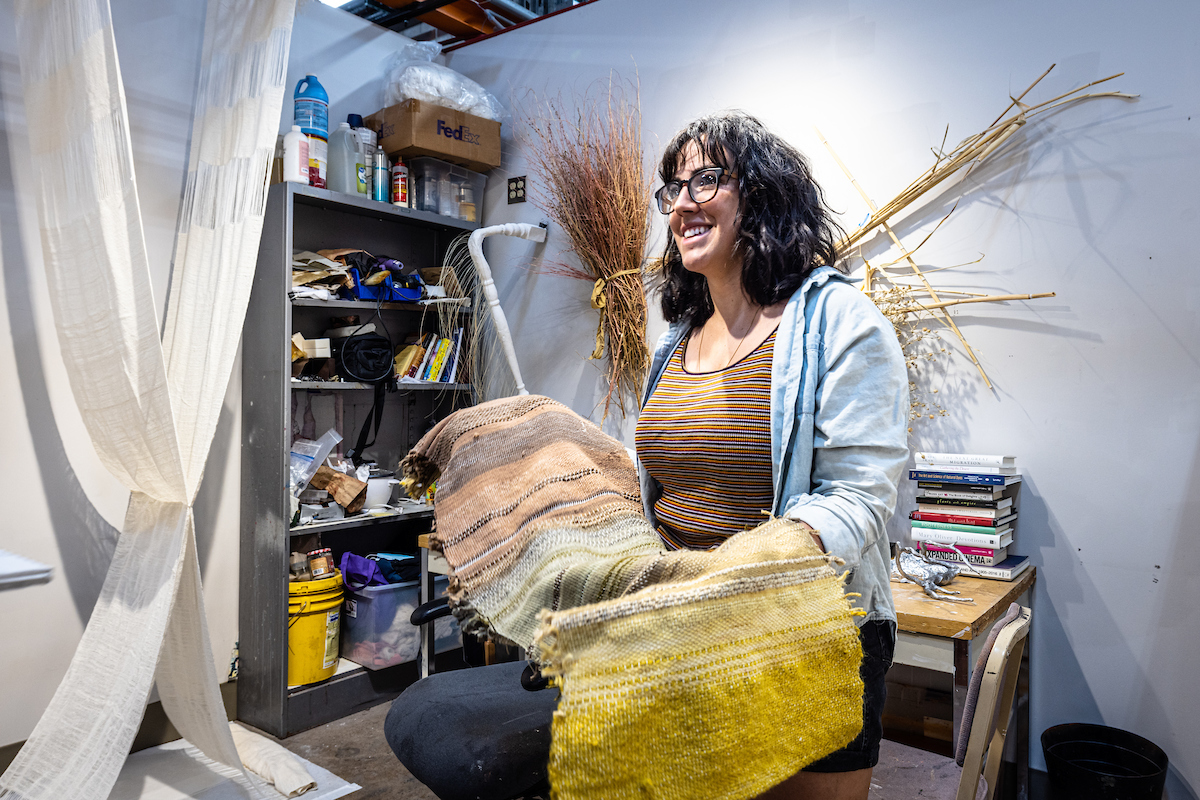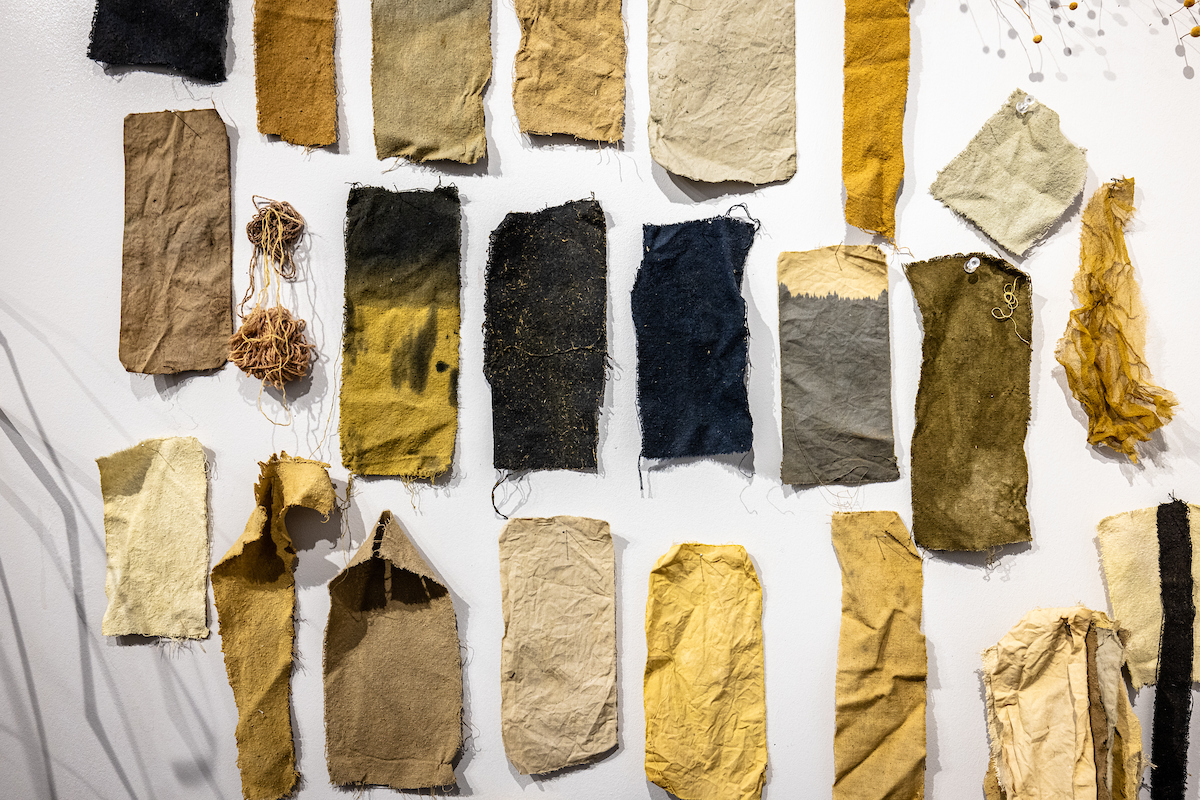About two weeks ago, The Guardian newspaper reported on the booming armadillo population in North Carolina.
The first armadillo showed up in 2007, but since 2019 their numbers have skyrocketed. It’s suspected that climate change is the culprit; armadillos don’t like cold, and North Carolina hasn’t seen a bitter winter in a while.
It’s news because it’s unusual, but what was not unusual was the language employed: “besieged,” “relentless march,” “nemesis” and “hunting aliens.”
Invasion biology — the study of the harm done to ecosystems by species introduced outside their native habitats — got its start in the mid-1980s among an international group of ecologists studying Mediterranean ecosystems, which occur on every temperate continent.
But some attitudes are changing in science. Arizona State University’s Matt Chew has co-authored several papers on the subject. Scientific American called him the “gadfly of invasion biology.” He is quoted in the New York Times on the subject, most recently in an article about eating invasive species.
He scoffs at the idea of restoration (“gardening” is what he calls it), at the militant language often employed toward the subject (outside of Tolkien, trees do not marshal themselves for commando sorties) and the agency attributed to species.
“Species either have what they need or they don’t,” Chew said. “And they don’t decide, ‘I’m going to go over there.’”
He’s not alone in challenging the generally held view.
Erick Lundgren, a doctoral candidate in the School of Life Sciences at ASU, published a paper last spring. He observed feral horses and burros (which are seen as invasive) digging wells, which were then used by almost 60 species in the Sonoran and Mojave deserts, including bobcats, coyote, deer and javelina.
It was the type of activity carried out by megafauna in Africa today and in North America 12,000 years ago.
“The reintroduction of megafauna may, in certain cases, replace lost ecological functions in a community,” Lundgren and his co-authors wrote. “Feral equids can increase water availability in drylands, with associated effects on a variety of species and ecosystem processes. We suggest that well digging by feral equids may replace a function lost with the extinctions of large vertebrates across the world’s drylands.”
He said the pushback was “quite astounding.”
Lundgren grew up fighting invasive species.
“I spent a lot of time out there killing introduced plants, thinking I was saving the world,” he said.
A good friend and his father both asked him questions along the lines of “Good for you, but what does that mean? What's that going to do? What's going to happen to these plants? What is their future here?”
As a biologist, Lundgren was curious about how ecosystems assemble and work. He started to question invasion biology.
“Everything that's here got here somehow,” he said. “And the native narrative kind of creates this fabricated idea that there's some perfect harmonious world that's always been the same, that's been evolving together for millions of years. That’s just a total artifice. It's totally a more religious sentiment than any biological reality. So I was originally curious, you know, coming from a mindset that introduced species are harmful and that things evolve to eat them or ecosystems shift to incorporate them. ... But the longer that I've been in this kind of camp, the more I've started to think that invasion biology, there's no biological reality behind it at all.”
Chew lives in a rural area of south Phoenix, in a former tuberculosis sanatorium on 4 acres. He has seen 156 species of birds on the property, including threatened Western yellow-billed cuckoos to endangered Southwestern willow flycatchers.
There are 295 species of plants (“that we know of,” Chew says), more than 200 arthropods, and 26 mammals and reptiles.
Behind the house is a food garden, a habitat garden, an ecotherapy garden (including a mesquite tree Chew and his wife, Juliet Stromberg, a plant ecologist and botanist, like to climb) and an herb garden. There are no hummingbird feeders, but plenty of plants they like.
The gardens are a mix of Sonoran species and what Chew calls “introduced species.”
Mexican spider lilies grow near white mulberry trees. There are Pakistani mulberry and castor bean plants, none of them native. The trees have since been banned from commercial sale in many cities because they aggravate allergies. Lantana was introduced, but it’s beloved by birds and insects. A lot of invasive plants weren’t considered invasive when they were imported for some purpose, like tamarisk for erosion control in the 1800s.
A couple of American snout butterflies gather pollen on a desert broom bush at the south Phoenix home of Matt Chew and Juliet Stromberg. The two have turned their yard — a densely forested 4 acres — into a research habitat garden with species of trees, bushes, animals and insects that have evolved in the area. Stromberg notes that they’ve counted 60 species of bees and 61 species of flies. Photo by Charlie Leight/ASU News
“A living playground for biologists,” Stromberg calls the gardens.
Chew gazes around the property and muses on what’s going on.
“There is basic kind of competition between individuals for resources, including space to exist. But do we have constant warfare of some kind going on out here? No, we don't. We have native vines growing in introduced trees. We have introduced vines growing in native trees. We have stuff that we bring in; ‘well, let's just see what it is going to do here.’ Other things like these cassias, we didn't plant that. Those are just here. ... Trying to understand this in terms of what might belong here and under what criteria is kind of a hopeless endeavor. ... Most of these things don't have any sense of being anywhere in particular, other than, yeah, this is a good spot for me to grow.”
Chew and Stromberg are making decisions all the time that directly or indirectly affect what can happen. To him, that defines the Anthropocene – the current era where, because of climate change, the hand of man has touched everything on Earth, and everything has to adjust.
Natural native situations aren’t possible because of massive interruption. Let’s say you want to plant only native plants in your yard. You buy a couple of mesquite trees from a nursery. Where did they come from? Not your yard. They have no continuity with that particular piece of land.
What is a “pristine state” in a landscape? Is it 200 years ago? Five hundred years ago? Ten thousand years ago?
“You're talking about baselines there,” Lundgren said. “And the baseline for the longest time was the historical record when it was first described by white people, which ignores the fact that Indigenous people have influenced landscapes for 10,000 years, and before they did, landscapes were very different than we've ever seen because there were huge animals.”
People need to stop thinking about baselines as much, Lundgren said.
“We can study the past to inform us and to understand the potentials and the way landscapes change and academically, for the curiosity of it, but let's actually let ecosystems be how they want to be because us forcing them into certain places that those states may not be attainable,” he said. “... So alternative approaches are saying let's think about functionality. Let's try to let rivers flood. Let's try to let predators be unmolested. Let's try to let animals do what they wish. And let's not worry about exactly what the world should look like.”
Language plays a role. Scientists often cite the effort to wipe out tamarisks after World War II, when the plants were called invaders and it was suggested to wipe them out with flamethrowers. The language employed was similar to what was heard during the Pacific campaign.
It hasn’t changed. An article in The New York Times in late November about Bradford pear trees used words like “villain,” “menace,” “invasion,” “monster.” It also mentioned “bounty” programs, where people who bring in evidence of a slain tree get a native replacement in return.
Often it’s a Frankenstein's monster of our own making, where the species was originally brought in for a purpose, like tamarisk (erosion control), Bradford pear trees (suburban beautification), Burmese pythons (pets) and kudzu (more erosion control).
If you have a native species that returns to a community, it’s going to cause effects too. Horses went extinct in North America, then returned with Europeans. Now, according to Lundgren’s study, they’re doing the same thing they did 8,000 to 12,000 years ago.
Rebecca Pipkin is an art student working on her MFA. Her work consists of weavings colored with dyes she has made from "invasive" plants.
Down in her Grant Street Studios workspace, she colors cotton and wool weavings with dyes made from introduced plants: warm yellows, soft greens, pale ocher. Some plants Pipkin gets from neighbors clearing off their properties.
“I’m really working with things that are unwanted,” she said. “It’s something that’s shifting in art — where do we get our materials and what happens to them after we’re done.”
Pipkin moved to Phoenix for graduate school. She started working on ideas and concepts about belonging and home.
MFA interdisciplinary student Rebecca Pipkin displays some of her work that consists of weavings colored with dyes she has made from "invasive" plants in her studio at the ASU Grant Street Studios. She collaborates with School of Life Sciences faculty member Matt Chew. Photo by Charlie Leight/ASU News
"Plants that are categorized as invasive are actually just being incredibly adaptable and transient, and they are really good at making a home for themselves wherever they migrate and move to,” she said. “Working with these plants is my way of connecting with and understanding the landscape that these plants inhabit in the current time. Having been transient, and new to the Phoenix desert, these plants have taught me a lot about what it means to move, and belong and adapt."
While hiking at South Mountain she collected some globe chamomile (native to southern Africa and Australia) and turned them into dye in her studio.
It “really felt like a distillation or kind of getting to the essence of what this living thing was like growing and inhabiting in this place. And it was this beautiful earth color.”
Pipkin has made dye from all kinds of things. Some work. Some don’t. Like the importers of non-native plants, she doesn’t know how something will turn out until it’s completely finished.
“These didn’t start out like this,” she says pointing to strips of dyed-black cloth samples hanging on the wall of her studio.
She has worked with giant reed, mustard plants, star thistle, fountain grass and buffelgrass.
“Dye is not necessarily the color that the color of the plant appears on the outside. So it's a little bit of a mystery and a little bit of chemistry. ... A lot of it comes out to these varying tones of brown to yellow. And then sometimes you stumble upon something kind of magical, and it's like this beautiful, bright color.”
MFA interdisciplinary student Rebecca Pipkin displays some of her dye samples she has made using "invasive" plants. Photo by Charlie Leight/ASU News
Large-scale changes in attitude like Pipkin’s are not likely anytime soon.
“These things take generations, at least educational generations,” Lundgren said. “Maybe not in the next 10 years, but over the next 20 years, I think that our ideas are changing about this.”
Species aren’t aware of the uproar they cause. Burmese pythons go about their lives in the Florida Everglades. Tamarisk engulfs riverbanks and infuriates rafters looking for a decent camp. Kudzu has become as Southern an institution as moon pie.
“What happens out there is largely a matter of where seeds fall, when rain falls, where herbivores and predators bite, and where accidents happen,” Chew said. “Our planting and irrigating and weeding and harvesting and pruning and treading exemplify those contingencies. It's a drama, but it's not a morality play."
Top image: School of Life Sciences faculty member Matt Chew talks about his south Phoenix home with its densely forested 4 acres on Nov. 3. Chew and his wife have turned their yard into a research habitat garden with species of trees, bushes, animals and insects that have evolved in the area. Photo by Charlie Leight/ASU News
More Science and technology

ASU and Deca Technologies selected to lead $100M SHIELD USA project to strengthen U.S. semiconductor packaging capabilities
The National Institute of Standards and Technology — part of the U.S. Department of Commerce — announced today that it plans to award as much as $100 million to Arizona State University and Deca…

From food crops to cancer clinics: Lessons in extermination resistance
Just as crop-devouring insects evolve to resist pesticides, cancer cells can increase their lethality by developing resistance to treatment. In fact, most deaths from cancer are caused by the…

ASU professor wins NIH Director’s New Innovator Award for research linking gene function to brain structure
Life experiences alter us in many ways, including how we act and our mental and physical health. What we go through can even change how our genes work, how the instructions coded into our DNA are…



